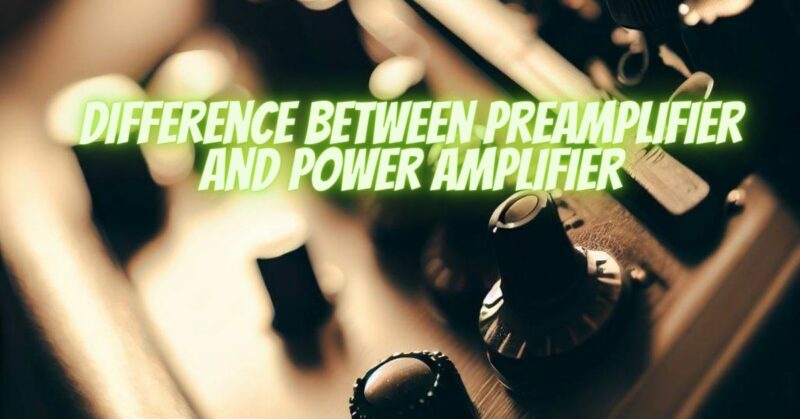In the world of audio equipment, preamplifiers and power amplifiers play distinct yet complementary roles in delivering high-quality sound. Each component performs specific functions in an audio system, and understanding their differences is crucial for audio enthusiasts and professionals alike. In this article, we will explore the characteristics and roles of preamplifiers and power amplifiers, shedding light on how they work together to create an immersive audio experience.
- Preamplifier:
A preamplifier, often referred to as a preamp, is the first stage in an audio signal chain. Its primary function is to process weak electrical signals from various audio sources and prepare them for amplification. Key characteristics of a preamplifier include:
a. Signal Level Adjustment: Preamplifiers allow users to control the volume level, providing the flexibility to match the audio output from different sources and adjust it to the desired listening level.
b. Input Selection: A preamp allows users to switch between various audio sources, such as CD players, turntables, and media players, enabling seamless integration into the audio system.
c. Phono Preamp: Some preamplifiers have a specialized phono input, which is essential for amplifying the low-level signals from a turntable’s cartridge.
d. Tone Controls: While not always present, some preamplifiers feature tone controls, such as bass and treble adjustments, allowing users to tailor the sound to their preferences.
- Power Amplifier:
A power amplifier, often called a power amp, is the second stage in the audio signal chain, following the preamplifier. Its primary function is to take the preamplified signal and amplify it to a level that can drive speakers and produce audible sound. Key characteristics of a power amplifier include:
a. Signal Amplification: Power amplifiers receive the low-level signals from the preamplifier and boost them to a level sufficient to drive the speakers’ woofers and tweeters.
b. Power Output: Power amplifiers are rated in watts per channel, indicating their ability to deliver power to the speakers. The wattage determines how loud and dynamic the sound can be.
c. Speaker Connectivity: Power amplifiers have speaker outputs to which speakers are connected. The speaker impedance and power handling capabilities must match those of the power amplifier to avoid damage.
d. High Current Capability: Power amplifiers must be capable of delivering high current to the speakers to reproduce dynamic peaks in music accurately.
- Synergy in Audio Systems:
The preamplifier and power amplifier work in harmony to create a seamless audio experience. The preamp prepares the audio signals for amplification, allowing users to control the volume and select audio sources. The power amplifier takes these signals and boosts them to drive the speakers, translating electrical signals into audible sound.
Preamplifiers and power amplifiers are distinct components in an audio system, each with specific functions. The preamplifier handles signal level adjustments, input selection, and sometimes tone controls. The power amplifier, on the other hand, amplifies the signals to power the speakers and produce sound. Together, they form a crucial partnership in delivering a high-quality audio experience. Understanding the differences and roles of preamplifiers and power amplifiers empowers audio enthusiasts to create well-balanced and immersive sound systems that bring music to life.


